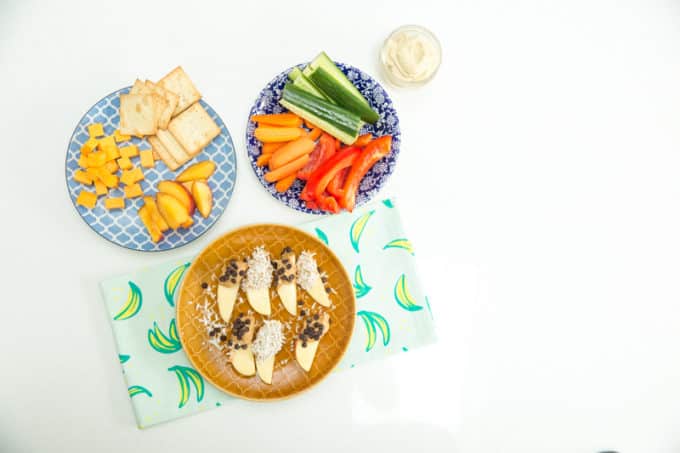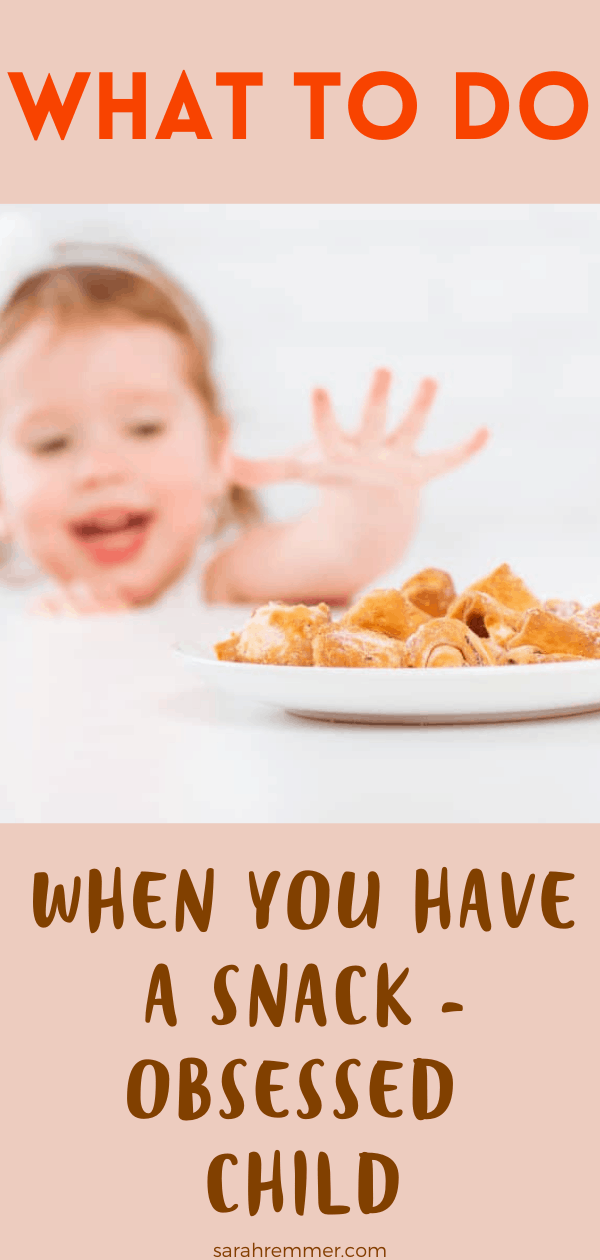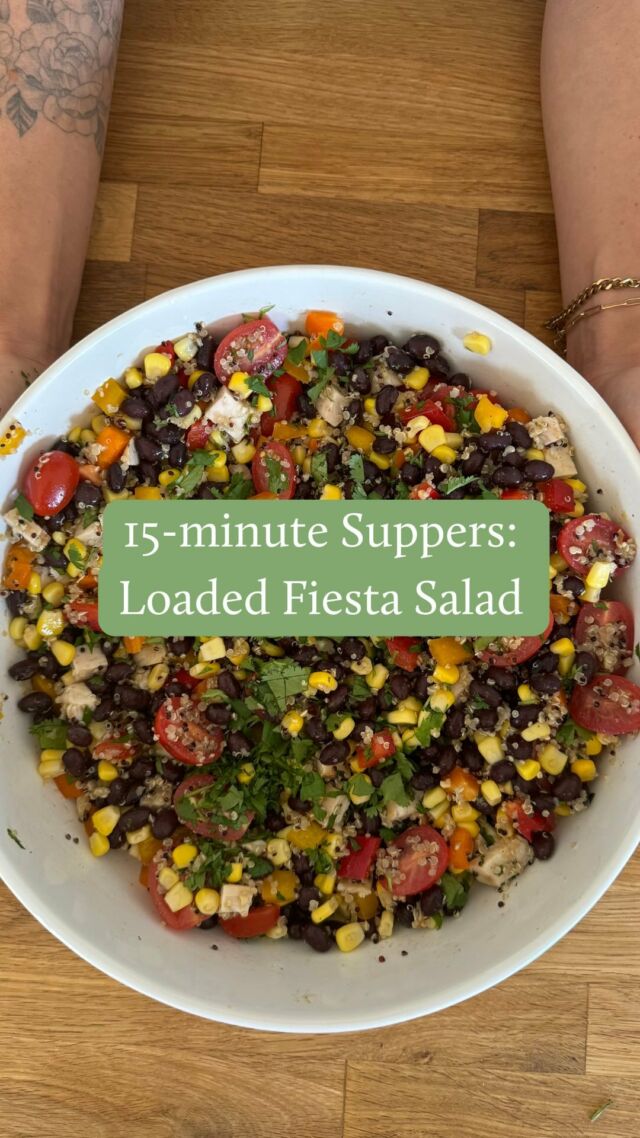Is “Mommy, can I have a snack?” something you hear several times a day, most days? If it is, you’re not alone. Here’s what to do when you have a snack-obsessed child.

It’s easy to create a chronic snacker when you’re a parent to a little one–their appetites are all over the place, they often don’t finish their meals and can be selective with their food choices, and often “snack foods” are more appealing to them. It’s also a lot easier to say “sure, you can have a snack”, then “no, you cannot have a snack” which often results in a “hangry” meltdown.
With some patience and perseverance, you can definitely tame your snack-loving child and create a more manageable feeding structure.
Create more structure around eating times:
According to Ellyn Satter’s Division of responsibility of feeding, you as the parent are responsible for the what’s, when’s and where’s of feeding, whereas your child is responsible for the if’s and how much’s of eating. Therefore, it’s important that you establish some structure around meal and snack times and stay consistent with this, so that your child learns that eating isn’t a free-for-all, but something that happens at intervals of about two to four hours apart every day (babies and toddler might go two to three hours in between meals/snacks while preschoolers and school-aged kids might go three to four hours in between). Babies and toddlers are growing at a more rapid rate and have smaller stomachs, therefore require more frequent eating opportunities, whereas by preschool, growth slows down a bit and stomach size increases as well.
At mealtimes, when Ben, my son, tells me he is “done”, I remind him that he won’t get another chance to eat until the clock says __ o’clock (three hours from then, let’s say), so it’s important that he eats enough to keep him satisfied until then. I also often say “the kitchen will be closed until tomorrow morning, so make sure that your tummy is full (not over-full).” During the day, I try to schedule eating times for every three hours, so if breakfast is at 7:30 am, there is usually a snack at 10:30 am and lunch at 1 pm (or so). If Ben, asks for a snack an hour after a meal, I tell him that it’s not snack time yet, but it will be after his sister’s nap, so that he knows that it’s coming and doesn’t feel like I’ve just said “no”. When it comes to bedtime snacks, as a rule of thumb, I will offer a snack if bedtime is more than two hours after dinner, otherwise, a snack is usually not offered.
Once your child knows that he will be given eating opportunities at regular intervals according to when you decide (not when he decides), he will be less inclined to ask all day long, and more inclined to fill his tummy a bit more at mealtimes (which is what I’ve noticed with my son). Creating structure around meal and snack times helps kids to learn self-regulation when it comes to their hunger and fullness.
The point is not to steer your child away from trusting his hunger cues. You want him to be intuitive and mindful when it comes to eating and communicate when he’s hungry or full. But you also want to give him the opportunity to become truly hungry–to know what that feels like–and then respond to it by eating until he’s comfortably full. This is self-regulation. Grazing throughout the day won’t give him that opportunity. It also creates a power struggle between parent and child when it comes to feeding and can disrupt daily activities and schedules.

Switch it up:
Typical snack foods tend to be sweet or neutral tasting and higher in carbohydrates, which appeal universally to young children. Think sweetened yogurt, crackers, fruit/veggie pouches, cereal, granola bars or fresh fruit. These are all foods that can healthfully make their ways into a snack rotation, but it’s important that kids are not eating less of their meals, “holding out” for their safe and yummy snack that they’ll be offered later. When kids know that yogurt and granola is their bedtime snack every night, they will most likely hold out for it when dinner is less-than-appealing. They know, after all, that they can fill their tummy with yogurt before bed, so dinner foods aren’t essential in their minds.
To break this habit, switch it up. Offer a snack at bedtime only if there is more than two hours between dinner and bed and warn your child that after dinner, the kitchen is closed until breakfast the next day. That way, she isn’t blindsided an hour later when she asks for a snack (there are exceptions of course, when your child is going through a growth spurt, for example, she may need more food than she otherwise would). If there is a two hour gap, make sure to switch up what you offer so that you have five or six snacks that you rotate through. This way, your child’s favourites aren’t always offered, therefore, she won’t “hold out” as much. You can give your child structured choice by saying something like “would you like to have warm milk with a bit of honey OR cottage cheese with banana” but ultimately you are in charge of what’s being offered, and it’s not always the same thing.
If your child refuses either option, calmly reply by saying something like “those are your two choices for snack tonight, you may choose one if you’d like but there’s no other options tonight”. The same goes for day time snacks. Try to include one food that you know appeals to your child, but pair it with a food that she hasn’t tried in a while or has previously rejected. I usually offer a protein-rich food paired with fruit (different types) for one snack and then a protein-rich food paired with veggies for another snack.

Snack time should be fun and enjoyable, but it shouldn’t take over the day. In fact, if it happens too often, it could create or exacerbate picky eating tendencies. It’s important that snack foods are nutrient dense most of the time, including a source of protein, which will keep your child fuller and more satisfied until meal time rolls around again. Try not to rely heavily on “snack aisle” snacks such as granola bars, store-bought cookies and crackers, cereal bars and dried fruit snacks, as these foods tend to be calorie-dense, yet nutrient-poor. However, as Jill Castle, MS, RD and paediatric nutrition expert mentions in her post How To Raise A Smart Snacker, it’s ok to offer treats for snacks once in a while for fun.
It’s important to remember too that everyone is different when it comes to eating, including kids. One four-year-old might be quite satisfied with three meals and only one snack, whereas another might need a snack in between each meal. Establish a feeding structure that works for you and your child, with enough flexibility to accommodate changing appetites and growth spurts, but enough structure to teach your child what true hunger and fullness feels like, to encourage being more adventurous with new foods and to avoid snacking free-for-alls.
Did you know that we offer personalized nutrition counselling for kids and families? If this is something you’d like to learn more about, please visit The Centre for Family Nutrition.









Comments
Marla says
Thanks for the tips! My almost 4 year old is snack obsessed and I’ve been trying to figure out how to encourage her to actually eat meals, not just snacks. I like the idea of structure — I know I can put a timer on our Echo for 10 minutes and tell her “you need to come inside in 10 minutes when the timer goes off” and she responds to that, so I’m going to start putting timers for 3 hours starting after breakfast to let her know when she can have a snack.
Sarah Remmer says
Thank you for taking the time to comment, Marla! I’m glad these tips were helpful.
Neha says
Yes, I do have a snack obsessed daughter. I will surely try to apply the above tips on her. Thank you so much for the above tips.
Sarah Remmer says
Hope it’s helpful, Neha!